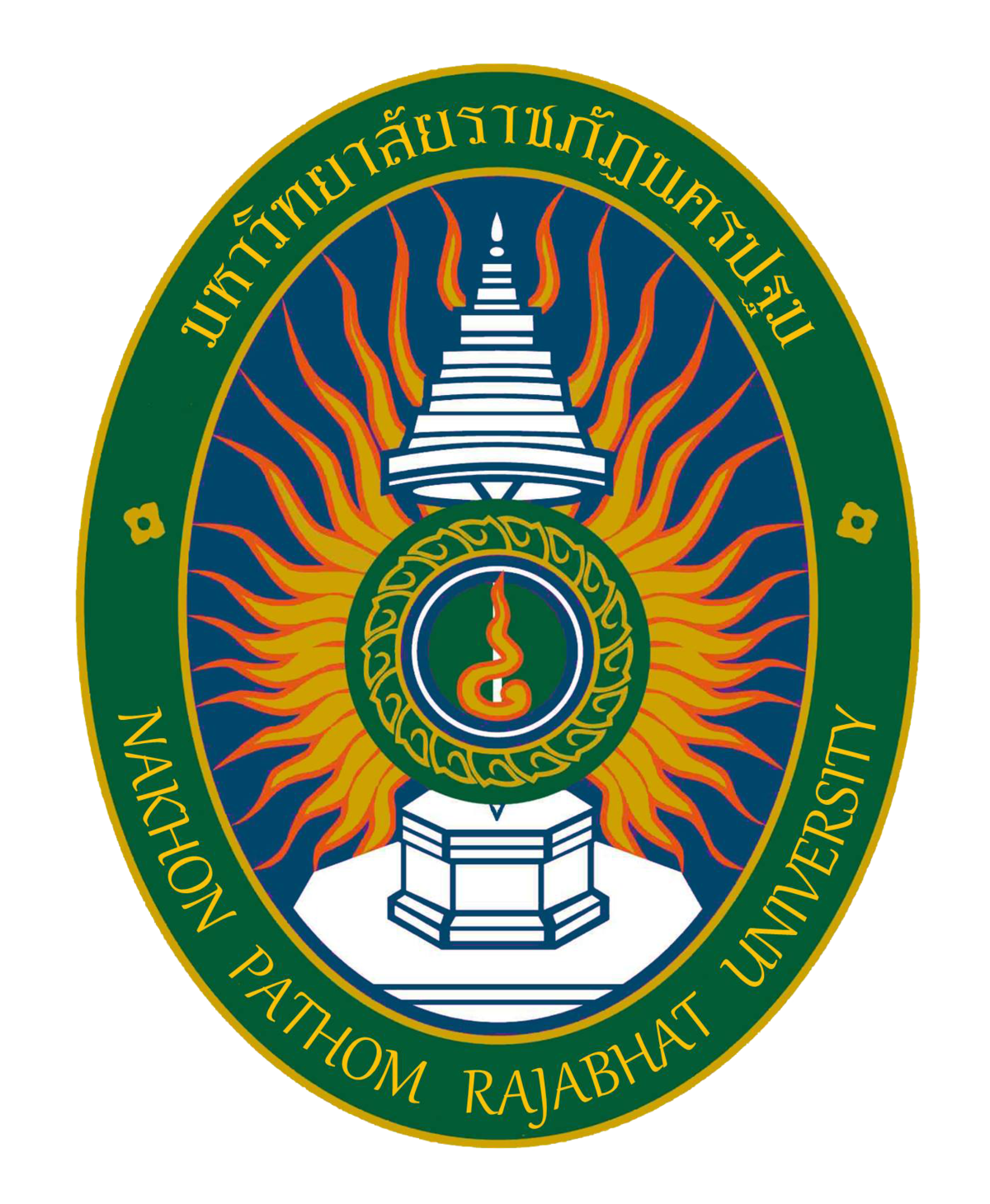
รายชื่อบทความงานประชุมวิชาการระดับชาติ ครั้งที่ 15
(มหาวิทยาลัยราชภัฏนครปฐม)
ระหว่างวันที่ 13 – 14 กรกฎาคม 2566
ณ โรงแรม ไมด้า แกรนด์ ทวารวดี นครปฐม จังหวัดนครปฐมสาขา คอมพิวเตอร์และเทคโนโลยีสารสนเทศ
| ชื่อบทความภาษาไทย |
โครงข่ายประสาทเทียมเพื่อคาดการณ์ปริมาณน้ำในแม่น้ำเจ้าพระยา จากข้อมูลเซนเซอร์วัดระดับน้ำในภาคเหนือ ภาคกลาง และระดับน้ำทะเล |
| ชื่อบทความภาษาอังกฤษ (Title) |
Artificial neural network for predicting water levels in the Chao Phraya River from water levels sensor in Northern and Central Thailand |
| ชื่อผู้เขียนภาษาไทย
(Authors TH) |
นายพร้อมพงศ์ ประไพย์  , อ.ดร.ชัยพร เขมะภาตะพันธ์, , อ.ดร.ชัยพร เขมะภาตะพันธ์, |
| ชื่อผู้เขียนภาษาอังกฤษ (Authors EN)
|
Prompong Prapai  ,
Chaiyaporn Khemapatapan, ,
Chaiyaporn Khemapatapan, |
| บทคัดย่อภาษาไทย |
จากสถานการณ์อุทกภัยในประเทศไทย ส่งผลกระทบต่อความเป็นอยู่ของประชากร ทั้งในภาคการเกษตร สังคมและเศรษฐกิจ โดยเฉพาะอย่างยิ่งกรุงเทพมหานคร ซึ่งเป็นเมืองสำคัญทางเศรษฐกิจของไทย เมื่อเกิดอุทกภัยในกรุงเทพมหานครจะส่งผลต่อภาพรวมทางเศรษฐกิจของประเทศไทยได้ จึงต้องศึกษาวิธีและวิจัยเพื่อแก้ปัญหาสถานการณ์อุทกภัยให้ยั่งยืน ดังนั้นผู้วิจัยจึงได้ดำเนินการศึกษาวิธีคาดการณ์ปริมาณน้ำในแม่น้ำเจ้าพระยา ด้วยเทคนิคโครงข่ายประสาทเทียมซึ่งมีการ สังเคราะห์และคัดกรองคุณลักษณะ (Attribute) ด้วยการด้วยวิธีการแรปเปอร์ (Wrapper Method) แบบวิธีลดตัวแปร (Backward Elimination) โดยมีจุดประสงค์เพื่อคัดเลือกข้อมูลที่มีผลต่อการคาดการณ์น้ำในแม่น้ำเจ้าพระยา และวิเคราะห์จำนวนโหนด และ จำนวนชั้นของชั้นซ่อน (Hidden layer) ให้เกิดความแม่นยำในการคาดการณ์ โดยกําหนดผลลัพธ์ การทํานายเป็นค่าปริมาณน้ำที่มาตรวัดน้ำเจ้าพระยาที่จุดวัดระดับคลองลาดพร้าว ทั้งนี้ในการทดลองสร้างโมเดลด้วยวิธีโครงข่ายประสาทเทียมโดยใช้ โปรแกรมภาษา Python โดยใช้ ไลบรารี scikit-learn และคัดกรอง คุณลักษณะผ่านโปรแกรม SPSS โดยใช้วิธีลดตัวแปรจากข้อมูลนําเข้าที่รวบรวมเป็นข้อมูลรายวัน ตั้งแต่วันที่ 1 ม.ค. 2560 - 31 ธ.ค. 2565 ทั้งหมด 2,191 วัน เป็นข้อมูลในภาคเหนือและภาคกลาง ประกอบด้วยข้อมูลอ่างเก็บน้ำและเขื่อน จำนวน 131 สถานี ปริมาณน้ำฝนจากสถานีวัด จำนวน 35 สถานี มาตรวัดน้ำทะเลที่ป้อมพระจุลจอมเกล้า และมาตรวัดน้ำเจ้าพระยา โดยจะแบ่งเป็นกลุ่มเรียนรู้ (Train Set) จำนวน 1,753 วัน คิดเป็นร้อยละ 80 และกลุ่มทดสอบ (Test set) จำนวน 438 วัน คิดเป็นร้อยละ 20 และตั้งค่าพารามิเตอร์ของโครงข่ายประสาทเทียมที่ให้มีประสิทธิภาพดีที่สุด โดยการปรับค่าจำนวนชั้นของชั้นซ่อน เป็น 1-6 ชั้น และจำนวนโหนดในแต่ละชั้นเป็น 500-2,000 โหนด ซึ่งจากการวิจัยพบว่าคุณลักษณะสำคัญที่ใช้ในการวิเคราะห์ มีจํานวน 96 คุณลักษณะ ประกอบด้วย 1) ค่าจากสถานีวัดระดับน้ำในอ่างเก็บน้ำและเขื่อนในภาคเหนือและภาคกลาง จำนวน 22 สถานี 2) ปริมาณน้ำฝนภาคเหนือและภาคกลาง จำนวน 61 สถานี และ 3) ค่าจากสถานีวัดระดับน้ำบริเวณเชื่อมต่อกับทะเล 1 สถานี ประกอบกับการคาดการณ์โดยกำหนด ชั้นซ่อนที่จำนวนชั้นของชั้นซ่อนเป็น 2 ชั้น และแต่ละชั้นมีโหนดจำนวน 500 โหนดได้ประสิทธิภาพในการคาดการณ์สูงสุด โดยได้ค่าเฉลี่ยความคลาดเคลื่อนจากข้อมูลจริง ร้อยละ 13.13 คิดเป็นความคลาดเคลื่อนของระดับน้ำ ประมาณ 0.4 – 1.0 เมตร
|
|
| คำสำคัญภาษาไทย |
โครงข่ายประสาทเทียม,ชั้นซ่อน,การคาดการณ์ปริมาณน้ำ |
| Abstract |
From the flood situation in Thailand, it has had an impact on the livelihood of the population, especially in the agricultural sector, society, and the economy, particularly in Bangkok, which is an important economic city in Thailand. When floods occur in Bangkok, it can affect the overall economy of the country. Therefore, research and studies have been conducted to find sustainable solutions to the flood situation. In this regard, researchers have conducted a study to predict the water level in the Chao Phraya River using artificial neural network techniques, which involve synthesis and attribute screening using the Wrapper Method and variable reduction using the Backward Elimination method. The objective is to select data that has an impact on predicting the water level in the Chao Phraya River and analyze the number of nodes and hidden layers to achieve accurate predictions. The predicted outcome is the water quantity measured at the Lad Phrao canal level measurement point in the Chao Phraya River. The experiment involved building a neural network model using the Python programming language, utilizing the scikit-learn library, and filtering features through the SPSS program. The input data collected spans from January 1, 2560, to December 31, 2565, totaling 2,191 days, including data from reservoirs and dams (131 stations), rainfall data from weather stations (35 stations), sea level data from the Chulalongkorn University tide gauge station, and water level data from the Chao Phraya River. The data was divided into a training set, consisting of 1,753 days (80% of the total), and a test set, consisting of 438 days (20% of the total). The parameters of the neural network were adjusted to achieve optimal performance by varying the number of hidden layers from 1 to 6 and the number of nodes per layer from 500 to 2,000. The research found that there are 96 important features used for analysis, including 1) water level data from reservoirs and dams in the northern and central regions (22 stations), 2) rainfall data from the northern and central regions (61 stations), and 3) water level data from the connection point to the sea (1 station). The prediction was made by setting the number of hidden layers to 2 and each layer having 500 nodes. The model achieved a maximum prediction performance with an average deviation from the actual data of 13.13%.
|
| Keyword |
Neural Network,Hidden layer,Predict the water level |
| กลุ่มของบทความ |
คอมพิวเตอร์และเทคโนโลยีสารสนเทศ |
| รูปแบบการนำเสนอ |
Oral |
| รูปแบบของบทความ |
บทความวิจัย |
| Publication date |
13 - 14 กรกฎาคม 2566 ณ โรงแรม ไมด้า แกรนด์ ทวารวดี นครปฐม |
|
|
